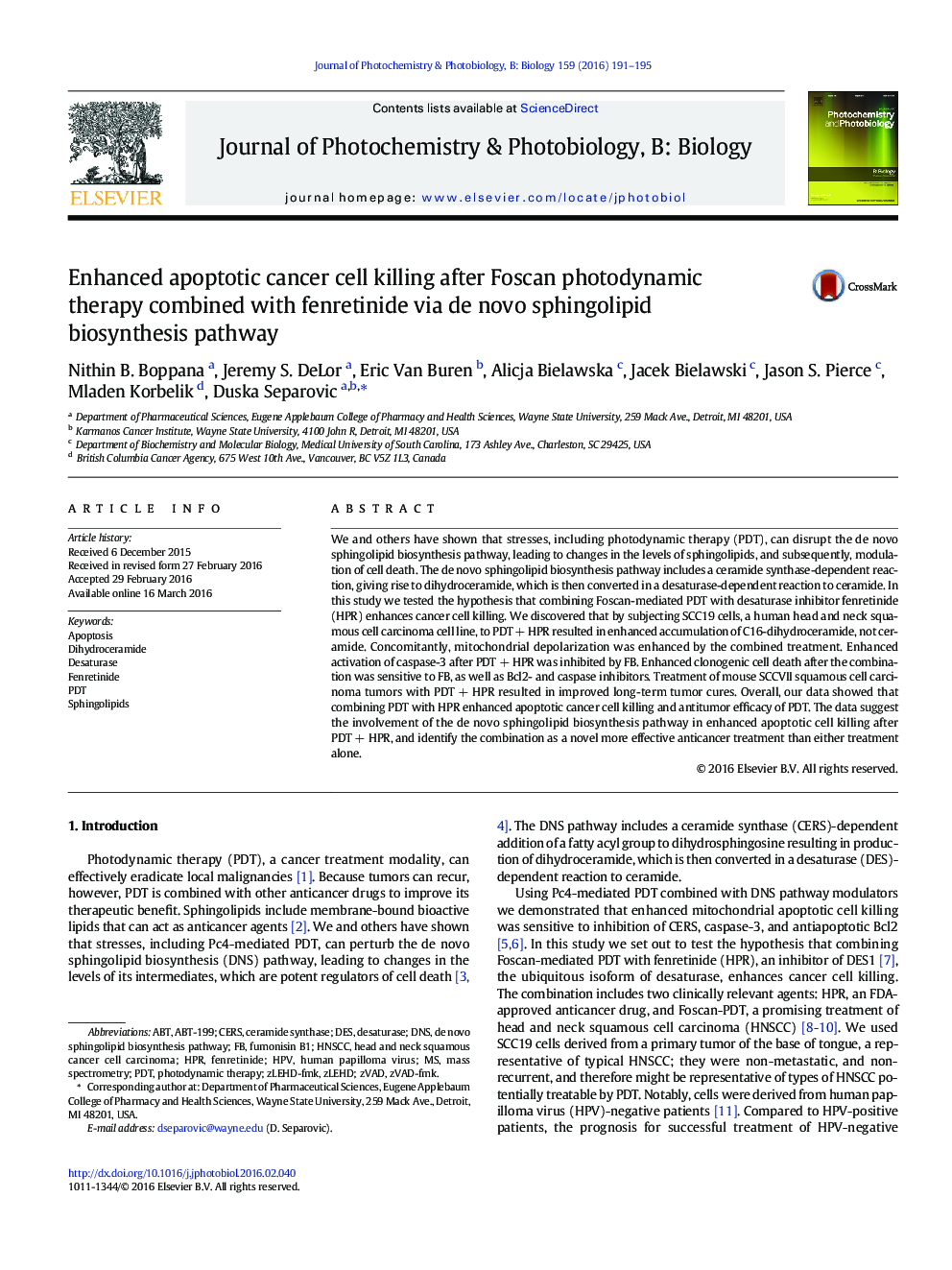| کد مقاله | کد نشریه | سال انتشار | مقاله انگلیسی | نسخه تمام متن |
|---|---|---|---|---|
| 29491 | 44411 | 2016 | 5 صفحه PDF | دانلود رایگان |
• Dihydroceramide is produced de novo via fumonisin-sensitive ceramide synthase.
• Dihydroceramide then gives rise to ceramide via fenretinide-sensitive desaturase.
• Fenretinide + Foscan-mediated PDT (PDT) enhances dihydroceramide accumulation.
• Fenretinide + PDT enhances fumonisin-sensitive apoptotic cell death.
• Fenretinide + PDT improves long-term tumor cures.
We and others have shown that stresses, including photodynamic therapy (PDT), can disrupt the de novo sphingolipid biosynthesis pathway, leading to changes in the levels of sphingolipids, and subsequently, modulation of cell death. The de novo sphingolipid biosynthesis pathway includes a ceramide synthase-dependent reaction, giving rise to dihydroceramide, which is then converted in a desaturase-dependent reaction to ceramide. In this study we tested the hypothesis that combining Foscan-mediated PDT with desaturase inhibitor fenretinide (HPR) enhances cancer cell killing. We discovered that by subjecting SCC19 cells, a human head and neck squamous cell carcinoma cell line, to PDT + HPR resulted in enhanced accumulation of C16-dihydroceramide, not ceramide. Concomitantly, mitochondrial depolarization was enhanced by the combined treatment. Enhanced activation of caspase-3 after PDT + HPR was inhibited by FB. Enhanced clonogenic cell death after the combination was sensitive to FB, as well as Bcl2- and caspase inhibitors. Treatment of mouse SCCVII squamous cell carcinoma tumors with PDT + HPR resulted in improved long-term tumor cures. Overall, our data showed that combining PDT with HPR enhanced apoptotic cancer cell killing and antitumor efficacy of PDT. The data suggest the involvement of the de novo sphingolipid biosynthesis pathway in enhanced apoptotic cell killing after PDT + HPR, and identify the combination as a novel more effective anticancer treatment than either treatment alone.
Journal: Journal of Photochemistry and Photobiology B: Biology - Volume 159, June 2016, Pages 191–195
